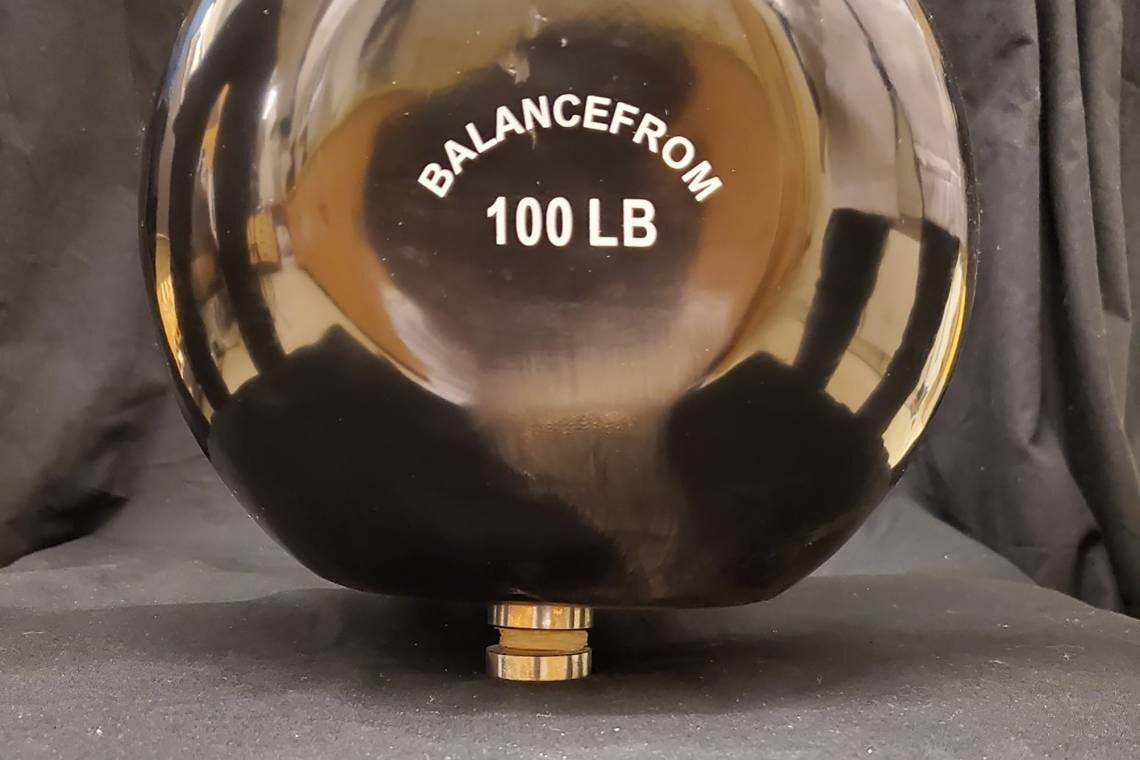

Duke researchers have developed the first synthetic gel-based cartilage with the strength of the real thing. A quarter-size disc of material can support the weight of a 100-pound kettlebell without ripping or losing its shape. Credit: Feichen Yang.
The thin, slippery layer of cartilage between the knee bones is magical – strong enough to support a person’s weight, but soft and flexible enough to cushion the joint from impact, for decades of repeated use. That combination of soft but strong has been difficult to reproduce in the laboratory. But now, Duke University researchers say they have created an experimental gel that is the first to match the strength and durability of the real product.
The material may seem like a distant cousin to Jell-O, which it is, but it’s incredibly strong. It’s 60% water, but a single quarter-size disk can support the weight of a 100-pound kettlebell without ripping or losing its shape.
Its developers say it is the first hydrogel, a material made of water-absorbing polymers, capable of withstanding jerks and heavy loads, as well as human cartilage, without wearing out over time.
Led by Duke chemistry and materials scientists Ben Wiley and Ken Gall, the research may one day offer people with knee problems a replacement for damaged cartilage, and an alternative to the 600,000 knee replacement surgeries performed in the United States every year.
Cartilage helps absorb a large amount of force with each step, usually two to three times your body weight, a smooth rubbery tissue that covers the ends of the bones and allows them to slide smoothly against each other.
However, cartilage also has a limited ability to heal and repair itself. Once used by age, overuse, or trauma, it’s difficult to treat, said Gall, a professor of mechanical engineering and materials science at Duke.
For patients who want to avoid or postpone a knee replacement that can only last 20 years, artificial cartilage can help. Hydrogels have been explored for use as a substitute for cartilage since the 1970s and are used in soft contact lenses and disposable diapers. Researchers are attracted to these materials because of their slippery and shock-absorbing properties and because they don’t harm nearby cells. But so far they have proven to be too weak to be used on load joints like the knee.
Duke’s team set out to change that. “We set out to make the first hydrogel that has the mechanical properties of cartilage,” said Wiley, a professor of chemistry at Duke.
The new hydrogel consists of two interlocking polymer networks: one made of elastic spaghetti-like threads and the other more rigid and basket-shaped, with negative charges along its length. These are reinforced with a third ingredient, a mesh of cellulose fibers.
When the gel stretches, the cellulose fibers resist traction and help hold the material together. And when squeezed, the negative charges along the rigid polymer chains repel each other and stick to the water, helping it regain its original shape.
“Only this combination of all three components is flexible and rigid and therefore strong,” said co-author Feichen Yang, who earned a Ph.D. of chemistry. in Wiley’s lab.
When the researchers compared the resulting material to other hydrogels, theirs was the only one that was as strong as cartilage, both under pressure and stretching.
In one experiment, the team subjected him to 100,000 cycles of repeated pulls, and the material held up as well as the porous titanium used for bone implants, “which exceeded our initial expectations,” said co-author William Koshut, Ph.D. . . student in Gall’s lab.
They also rubbed the new material against natural cartilage a million times. They found that its smooth, slippery, self-lubricating surface is as wear-resistant as real and four times more wear-resistant than synthetic cartilage implants currently approved by the FDA for use on the big toe.
Moving the material from the lab to the clinic would take another three years at least, Wiley said. Initial safety tests suggest the material is not toxic to laboratory-grown cells. The next step is to design an implant that they can test on sheep.
But the team says the research could eventually offer new options for people with knee pain and get them back to doing what they like without the long recovery times and limited life associated with cartilage repair or replacement surgery. on your knees.
3-D printable implants can soothe damaged knees
Feichen Yang et al, a synthetic hydrogel compound with the mechanical behavior and durability of cartilage, Advanced functional materials (2020). DOI: 10.1002 / adfm.202003451
Provided by Duke University
Citation: From the laboratory, the first gel that simulates cartilage that is strong enough for the knees (2020, June 26) was retrieved on June 26, 2020 from https://phys.org/news/2020-06-lab -cartilage-mimicking-gel-strong -knees.html
This document is subject to copyright. Other than fair dealing for private research or study purposes, no part may be reproduced without written permission. The content is provided for informational purposes only.